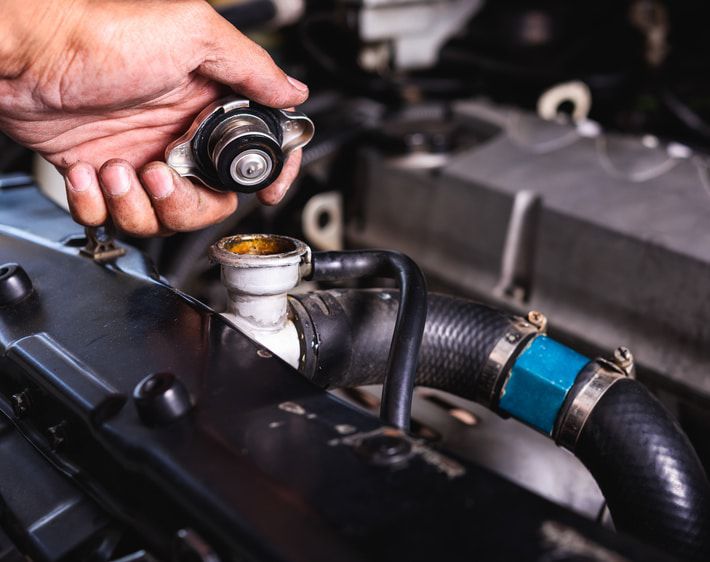You turn right. You turn left. You parallel park. You can maneuver thousands of pounds of metal, rubber, wires, and technology without a second thought, all thanks to power steering. It's easy to take for granted but without it, maneuvering a vehicle would take some serious elbow grease.
In automotive history’s earlier days, steering even a fully-operational car required a good deal of effort. That all changed in 1951 with the debut of the Chrysler Imperial, the model that introduced hydraulic power steering to the world as “the miraculous new Hydraguide power steering.”
Times have changed, though, and today’s drivers are far more likely to steer not with hydraulic power steering but instead with electric power steering. Learn what power steering is, how it works, and when to spot issues with your power steering system.
How Does Power Steering Work?
In hydraulic power steering systems, the steering relies on pressurized hydraulic fluid typically served by a mechanical pump powered by the automobile's engine. These hydraulic systems exhibit a couple of unfavorable characteristics: they're complicated and they can negatively impact gas mileage. Yet, for roughly half a century, this approach worked wonders for drivers around the world — until electric power steering (EPS) brought drivers into the 21st century.
Electric power steering combines an electric motor with a computer and sensors to determine how much power to apply to the driver’s steering depending on the speed of the vehicle. When you're driving slower, more power is provided thereby making it easier to turn and steer. When you're driving faster, however, the vehicle can be easier to steer without the help of the EPS system, so less power is provided.
Additionally, this electronic control system goes beyond making steering easier. It can also double as a safety feature. For instance, if you’re moving slowly and turning the steering wheel sharply, you’re likely parking or maneuvering around an obstacle and need more steering support to park or maneuver safely. If you’re driving very fast, however, you might be dealing with freeway traffic — traveling at speeds when sharp turns may very well be dangerous.
Spotting Power Steering Problems
It’s often easy to notice an issue with a vehicle's power steering. That’s because, as the driver, you’re always in contact with the steering wheel.
Such issues may include:
- Poor vehicle responsiveness when steering
- Noises such as whining or groaning accompany your turning of the steering wheel
- A stiff steering wheel that is more difficult than usual to move
Signs like a stiff steering wheel likely point to a power steering issue. However, if your steering wheel is shaking when you brake or drive, it's best to get your car checked promptly for other issues.
Power to the Driving People
Getting a two-ton vehicle to respond to subtle — and not-so-subtle — turns of a steering wheel hasn't always been easy. In fact, up until the invention of power steering, turning a car took some serious elbow grease. But with a modern, well-maintained electronic power steering system, turning the steering wheel is as simple as it sounds!
Is your power steering feeling a bit sluggish? Has it been awhile since you've had it checked out? Avoid issues such as a power steering leak with a complete vehicle inspection from your local Firestone Complete Auto Care! It’s one of the best ways to ensure your power steering system and the rest of your vehicle’s vital components can perform at their best.



